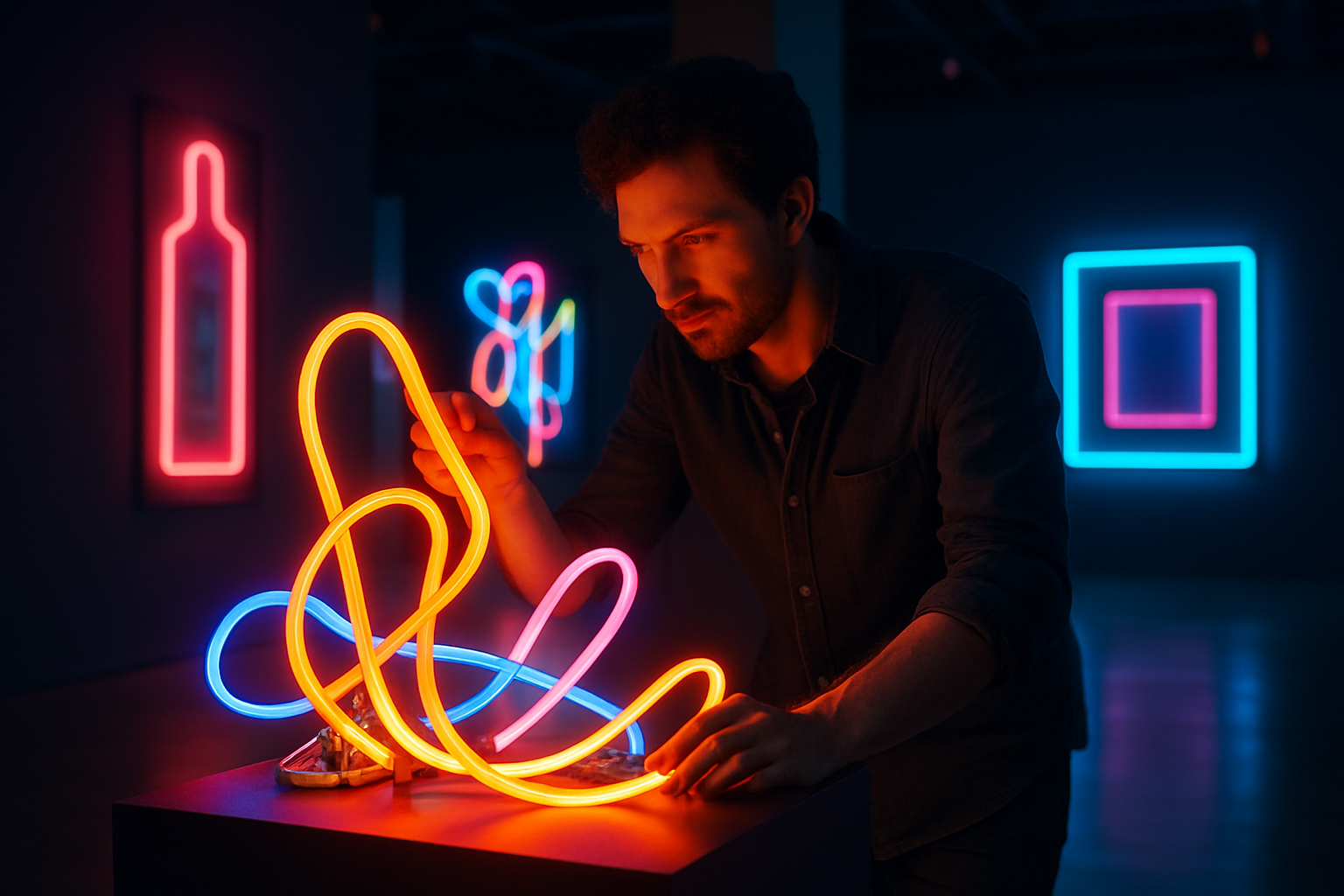The Neon Renaissance: Illuminating Modern Art
In a world increasingly dominated by digital screens, an unexpected artistic revival is taking place. Neon, once relegated to the realm of vintage signage and retro aesthetics, is experiencing a vibrant resurgence in contemporary art. This luminous medium is captivating a new generation of artists and audiences alike, bridging the gap between nostalgia and cutting-edge creativity. As galleries and public spaces alike embrace the allure of neon, we explore the fascinating world of this electrifying art form and its impact on modern visual culture.

From Commercial to Canvas
While neon’s commercial applications flourished, its potential as an artistic medium remained largely untapped until the latter half of the 20th century. Pioneering artists like Dan Flavin and Bruce Nauman began experimenting with neon in the 1960s, pushing the boundaries of light-based art. Their groundbreaking work laid the foundation for neon’s transition from mere signage to a respected medium in contemporary art. Today, a new wave of artists is building upon this legacy, exploring neon’s unique properties to create thought-provoking installations and sculptures.
The Technical Artistry
Creating neon art is a delicate balance of science and craftsmanship. Artists must master the intricacies of bending glass tubes, filling them with rare gases, and precisely controlling electrical currents. This technical complexity adds a layer of skill to neon art that sets it apart from many other mediums. The process of creating a neon piece is as much a performance as the final product, with artists often incorporating the bending and shaping of tubes into live demonstrations and installations.
Neon in the Digital Age
In an era dominated by digital screens and LED displays, neon’s analog charm offers a refreshing contrast. Its warm, organic glow provides a tactile quality that pixels simply cannot replicate. This juxtaposition has made neon particularly appealing to artists and designers seeking to create immersive experiences that bridge the physical and digital worlds. From interactive installations to augmented reality projects, neon is finding new life at the intersection of traditional craftsmanship and cutting-edge technology.
Environmental Considerations and Innovations
As the art world grapples with issues of sustainability, neon artists are at the forefront of developing eco-friendly alternatives. While traditional neon signs consume relatively little energy, the gases used in their production raise environmental concerns. In response, some artists are experimenting with LED-based neon alternatives that mimic the aesthetic of traditional neon while reducing environmental impact. This fusion of traditional aesthetics with modern technology is opening up new possibilities for sustainable light art.
Cultural Impact and Future Prospects
Neon’s resurgence in contemporary art is more than just a aesthetic trend; it reflects broader cultural shifts. In a world increasingly mediated through screens, neon offers a tangible, sensory experience that resonates with audiences seeking authenticity and connection. Its ability to transform spaces and create immersive environments has made it a favorite among architects and interior designers, blurring the lines between art, design, and functionality.
As we look to the future, neon’s role in the art world seems poised for continued growth. Its versatility as a medium allows for endless experimentation, from small-scale sculptures to massive public installations. The ongoing dialogue between traditional neon techniques and modern technologies promises to yield innovative new forms of expression. Moreover, neon’s cultural significance as a symbol of urban life and nocturnal allure ensures its enduring appeal to artists and audiences alike.
Conclusion
The neon renaissance represents a fascinating convergence of nostalgia, craftsmanship, and contemporary artistic vision. As artists continue to push the boundaries of what’s possible with this luminous medium, we can expect to see neon play an increasingly prominent role in shaping the visual landscape of our cities and galleries. From intimate studio pieces to monumental public works, neon art illuminates the intersection of past and future, inviting us to see the world in a new light. As this electrifying art form continues to evolve, it serves as a brilliant reminder of the enduring power of light to captivate, inspire, and transform.





